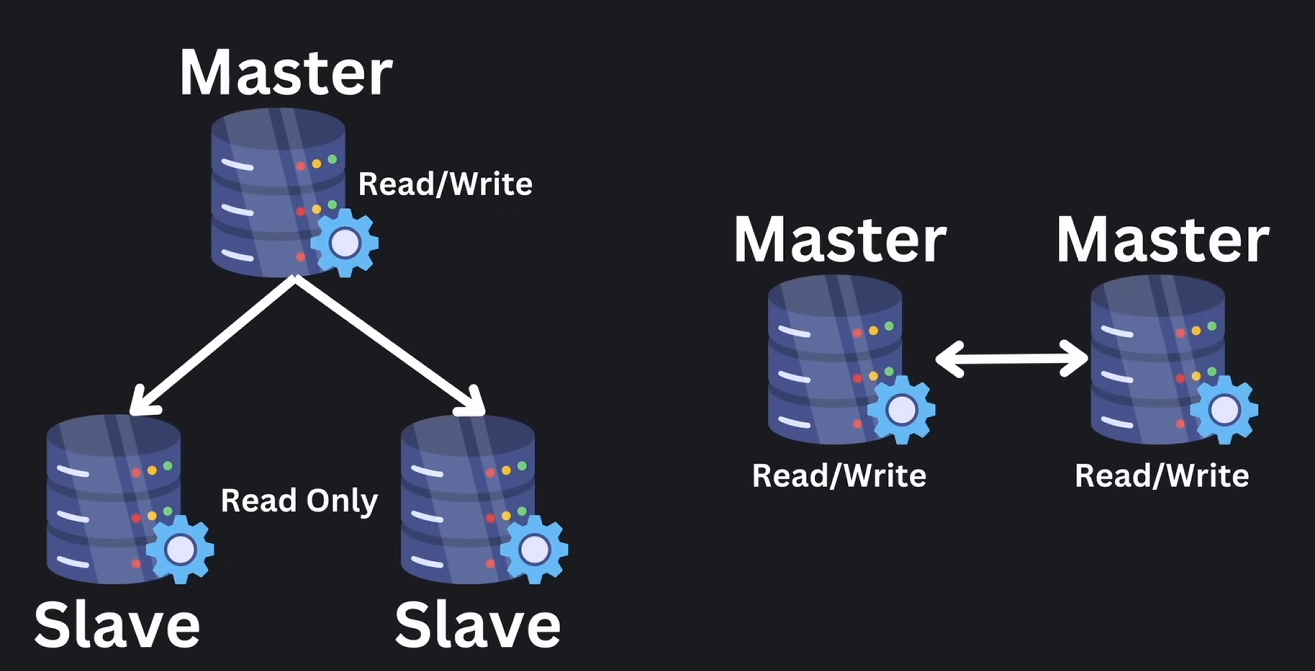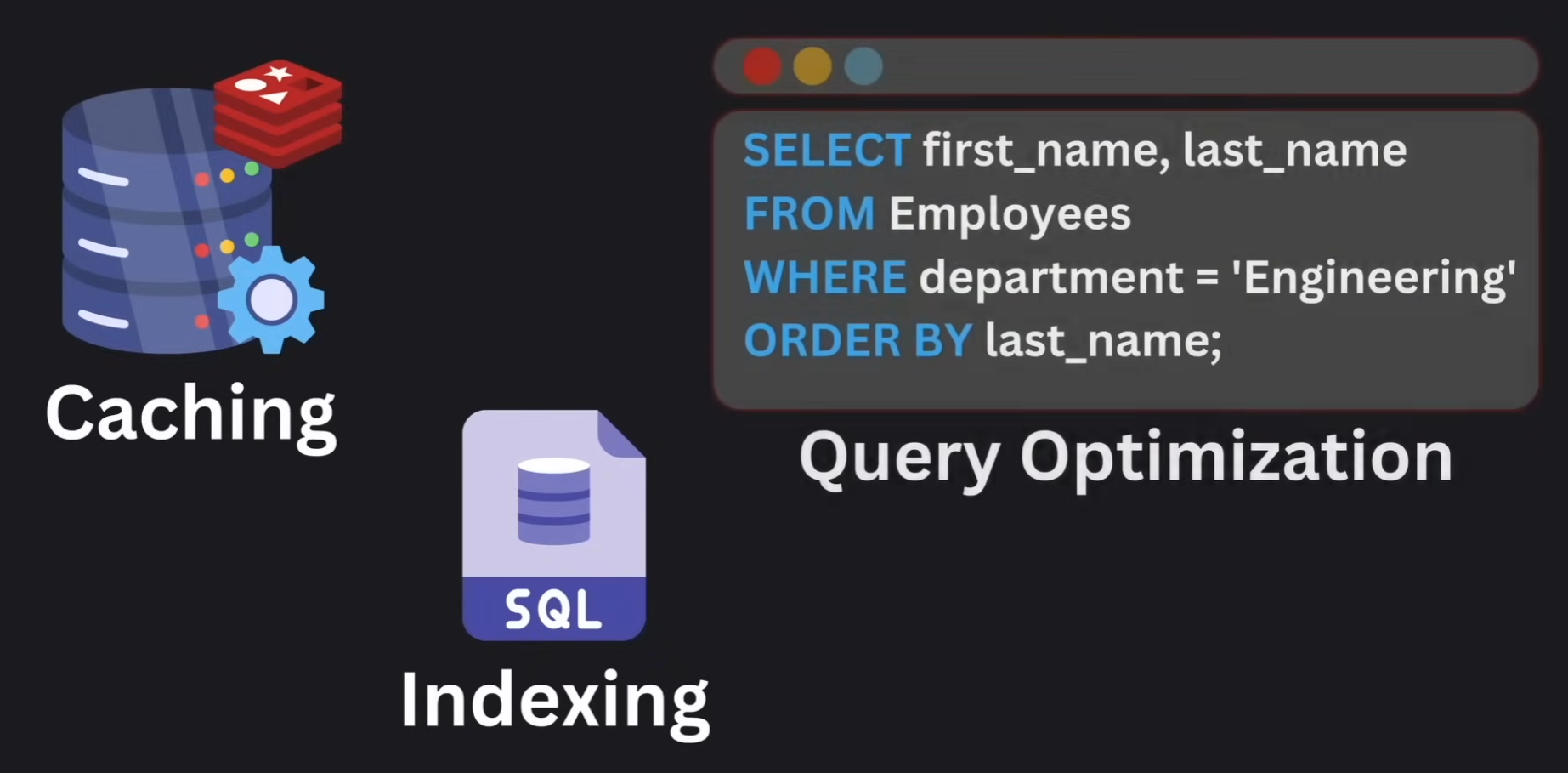system-design-refresher
Databases
Contents
Relational Databases
All SQL databases use tables for data storage and use SQL as a query language. They are great for transactions, complex queries and integrity.
The most common examples are PostgresQL, MySQL, SQLite, etc.
A.C.I.D Compliance
Atomicity: transactions are all or nothingConsistency: after a transaction your database should be in a consistent stateIsolation: each transaction should be independentDurability: once a transaction is commited the data is there to stay
NoSQL Databases
These databases drop the Consistency property from the ACID.
No schemas, good for unstructured data.
There are different types of NoSQL databases:
Key-Value PairsDocument-basedGraph-basedIn-memory
The most common examples are MongoDB, Cassandra, Redis, etc.
In-memory Databases
Can be Relational or NoSQL depending on their design and structure.
Scaling

Vertical Scaling
- Increasing CPU power
- Adding RAM
- Adding disk storage
- Upgrading network
Horizontal Scaling
- Sharding
- Replication
Sharding
Consists of distributing different portions (shards) of the dataset across multiple servers.
Some of the sharding strategies are:
Range-based Sharding: based on the range of a given keyDirectory-based Sharding: Lookup service to direct traffic to the correct nodeGeographical Sharding: Based on geographic location
Replication
Keeping copy of data in multiple servers for high availability.

Master-Slave replication: strategy where slave instances are only used for READ operationsMaster-Master replication: all instances can do WRITE and READ operations
Performance

Some of the most common techniques to optimize performance are:
Caching: In-memory caching is usually used for frequently accessed dataIndexing: Creating an index for frequently accessed columns will significantly speed up retrieval timesQuery Optimization: Optimizing queries for fast data access. i.e. minimizingJOINs and using tools to understand query performance.